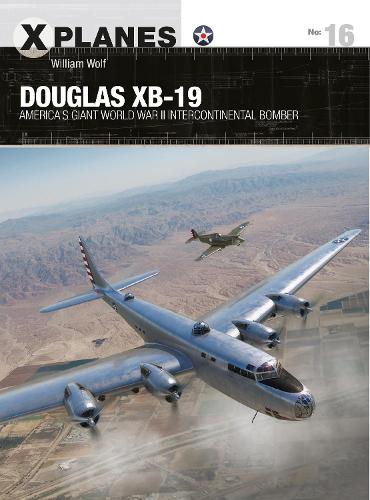
Douglas XB-19: America's giant World War II intercontinental bomber
(Paperback)
Publishing Details
Douglas XB-19: America's giant World War II intercontinental bomber
By (Author) Dr William Wolf
Illustrated by Adam Tooby
Bloomsbury Publishing PLC
Osprey Publishing
5th January 2022
28th October 2021
United Kingdom
Classifications
General
Non Fiction
Air forces and warfare
Second World War
Modern warfare
Aerospace and aviation technology
623.74632
Physical Properties
Paperback
80
Width 182mm, Height 246mm, Spine 4mm
263g
Description
In 1935 the USAAC wanted to build a potential intercontinental bomber, a 'Guardian of the Hemisphere,' and granted Donald Douglas a contract to build the worlds largest bomber. The groundwork for the intercontinental bomber had been laid in the previous two decades by the courageous military and civilian pilots who risked their lives to set new distance and endurance records. After World War I the future Axis and Allied nations built larger aircraft and finally during World War II Germany and Japan became intent on developing intercontinental bomber to retaliate against America. While the XB-19 never flew as an intercontinental bomber or even as a combat bomber; its contributions as a 'Flying Laboratory' significantly influenced the development of the Consolidated B-36 Peacemaker, the worlds first true intercontinental bomber. Since the XB-19 project was top secret and there was only one example built there is little information remaining for researchers. Over the years Bill Wolf has collected the largest quantity of XB-19 material and a number of photographs, including a copy of the original Army Air Force acceptance of the aircraft, first-hand narratives of its first flight, and other USAAC and Douglas Company documents. This book provides a superbly illustrated history of the XB-19 intercontinental bomber and the text is supported by previously unpublished photographs.
Author Bio
Dr William Wolf is the author of 24 books on World War II air combat. He was a dentist for 22 years before retiring at the age of 45 to pursue his aviation interests and outdoor pastimes. Over the past 45 years he has collected over 25,000 books and magazines; 10,000-plus photographs; along with 2,000 reels of rare microfilm from original World War II sources (equivalent to 2.5 million pages, indexed, and placed on microfiche); over 800 videos and DVDs; and 1,000-plus CDs of scanned manuals and books.
